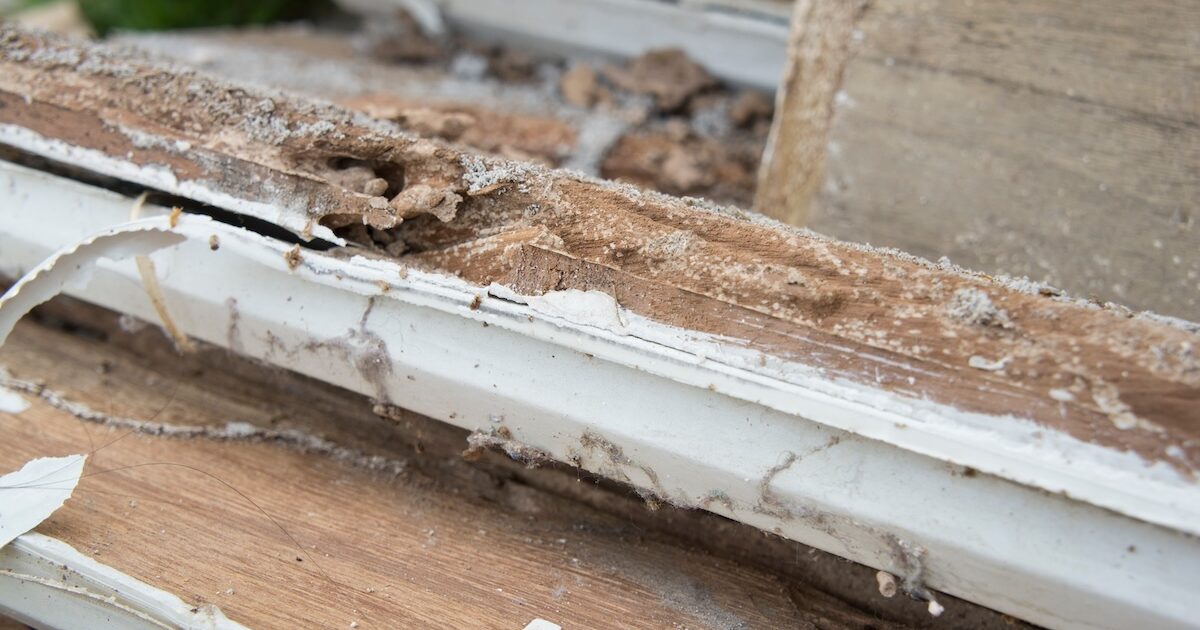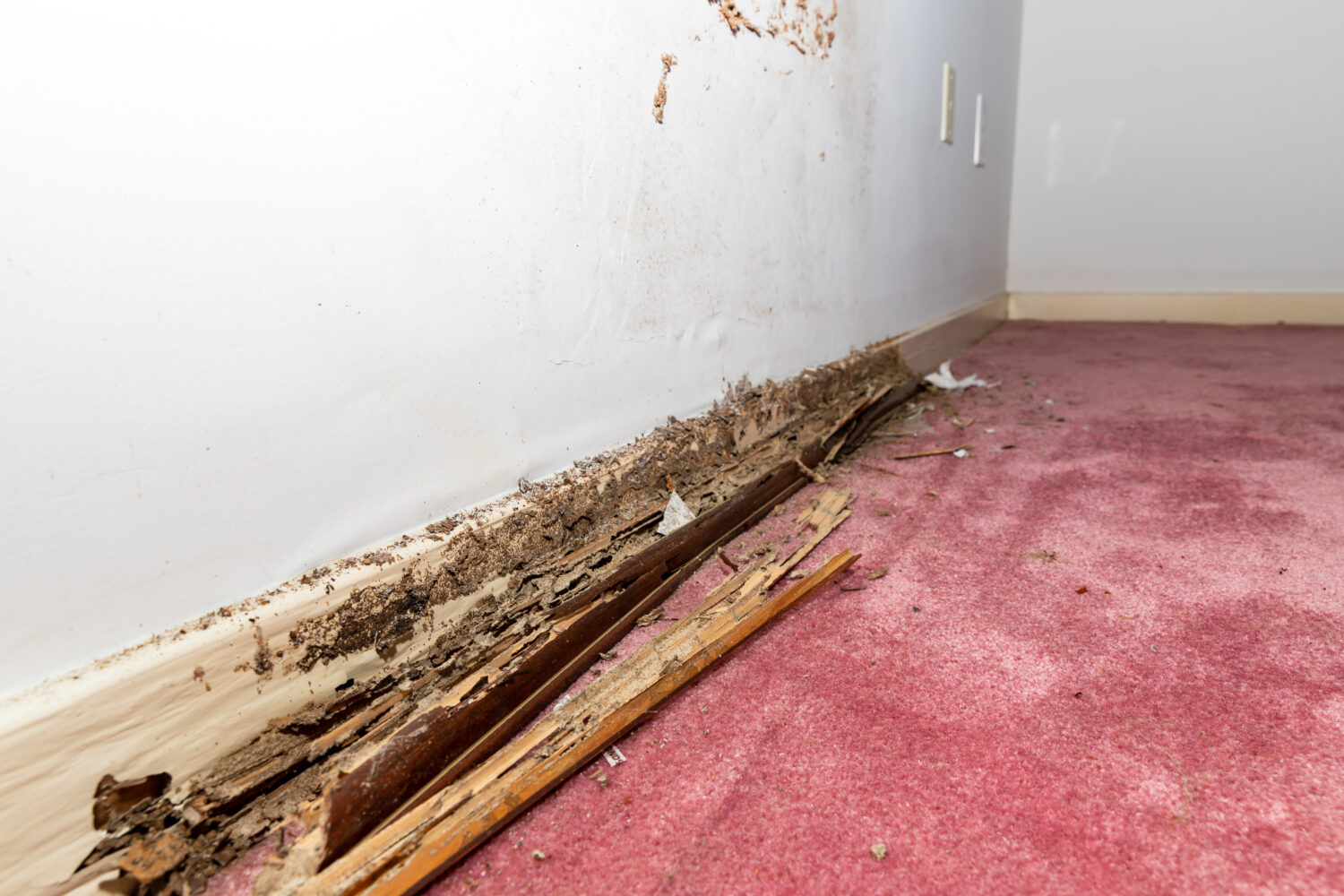
Facing a termite infestation can be a homeowner’s nightmare. The anxiety of discovering termites and the potential damage they cause to your home is overwhelming. Did you know that subterranean termites cause billions of dollars in damage every year? When you’re getting rid of an infestation, you’re likely to wonder about the best treatment for subterranean termites. Drive-Bye Exterminators is here to help!
Here’s the truth–the right treatment for you will depend on a variety of factors, including the location of your home and being close to water. The most effective way to get rid of termites is to reach out to us for a free inspection.
Let’s explore the best treatment options for termites in Florida and help you find peace of mind.
Liquid Termiticides: A Barrier Solution
Liquid termiticides are a popular and effective method for combating subterranean termites. They work by creating a chemical barrier in the soil around your home, which prevents termites from entering and establishing colonies. Here’s a closer look at how this method works and what to expect:
Application Process
- Site Preparation: The first step involves a thorough inspection of your property to identify termite activity and potential entry points. Firstly, technicians then prepare the site by digging trenches around the foundation of your home. In some cases, they may also need to drill small holes in concrete or other hard surfaces to ensure complete coverage.
- Termiticide Application: Next, once the site is prepared, technicians apply the liquid termiticide to the trenches and any drilled holes. The termiticide is carefully measured and mixed to ensure the correct concentration for maximum effectiveness.
- Sealing the Trenches: After applying the termiticide, the trenches are filled back in with soil, ensuring that the treated soil forms a continuous barrier around your home.
Soil Treatment
- Penetration and Coverage: The termiticide penetrates the soil, forming a continuous barrier that termites cannot cross. This barrier disrupts their ability to tunnel and reach your home’s wooden structures.
- Residual Effect: The treated soil remains effective for several years, depending on the specific product used. Some termiticides are designed to bind tightly to soil particles, providing long-lasting protection even in areas with heavy rainfall or irrigation.
Effectiveness Duration
- Long-Term Protection: Liquid termiticides can provide protection for five to ten years or more, depending on factors such as soil type, weather conditions, and termite pressure in your area. Periodic inspections and maintenance treatments may be necessary to ensure continued effectiveness.
- Immediate and Gradual Impact: Upon application, the termiticide begins to work immediately, killing termites that come into contact with it. Over time, the barrier prevents new termites from entering, gradually reducing the population around your home.
Bait Systems for Subterranean Termites
Bait systems are another effective method for controlling subterranean termites. This approach involves using strategically placed bait stations around your property to attract termites and deliver a slow-acting poison that they carry back to their colony in the meantime. Here’s how bait systems work and what makes them a compelling option for termite control:
Application
- Strategic Placement: Technicians place bait stations in the ground around your home, focusing on areas where termite activity is most likely, such as near the foundation or in the yard. These stations are designed to blend in with the environment and are safe for pets and children.
- Monitoring and Maintenance: After the initial installation, the stations are regularly checked and maintained by professionals. This ensures that the bait remains attractive and effective over time.
Attraction
- Termite-Friendly Bait: The bait used in these systems is specially formulated to be highly attractive to termites. It typically contains cellulose, a primary component of wood, combined with a slow-acting toxicant.
- Foraging Termites: Worker termites, which are responsible for foraging, discover the bait and consume it. They then return to the colony and share the poisoned food with other termites, including the queen.
Slow-Acting Poison
- Spreading the Poison: The slow-acting nature of the poison is crucial. It allows termites to consume the bait and return to the colony multiple times before dying. This behavior helps spread the toxicant throughout the colony.
- Colony Elimination: Over time, as more termites are exposed to the poison, the entire colony is affected. This method targets the source of the infestation, leading to a significant reduction in termite numbers.

Wood Treatments
When you want the best treatment for termites, you might need to consider treating the wood itself.
Wood treatments involve applying chemicals directly to the wooden structures of your home to protect them from termite damage. This method can be highly effective, especially when used in conjunction with other termite control strategies.
How it Works with Wood Surface Treatments
- Direct Application: Surface treatments involve applying a liquid termiticide directly to exposed wood surfaces. This can be done using brushes, sprays, or rollers. The treatment soaks into the wood, creating a protective barrier.
- Preventive Measure: Surface treatments are often used as a preventive measure during the construction of new homes or renovations. They help protect new wood from future termite infestations.
Injected Treatments
- Deep Penetration: Injected treatments are designed to deliver termiticides deep into the wood. Technicians drill small holes into the wood and inject the termiticide under pressure, ensuring thorough penetration.
- Targeted Approach: This method is particularly useful for treating specific areas where termite activity has been detected, such as wooden beams, floor joists, and wall studs.
Borate Treatments
- Natural Mineral Solution: Borate treatments use a solution of borates, which are naturally occurring minerals. Borates are highly effective at protecting wood from termites and other pests.
- Versatility: Borate treatments can be applied to wood during construction or renovation. They can also be used on existing structures, making them a versatile option for both new and old homes.
- Long-Lasting Protection: Once absorbed into the wood, borates provide long-lasting protection by making the wood unpalatable to termites and other wood-destroying insects.
Get the Best Treatment for Subterranean Termites from Drive-Bye Exterminators
It’s not always a straightforward answer on the best termite treatment for your home. But the good news is that Drive-Bye Exterminators is seasoned in getting rid of termites. However, with your free inspection, we can make the most effective recommendations for your situation. Call us now to get started!






